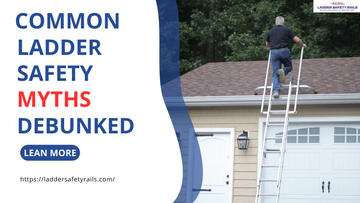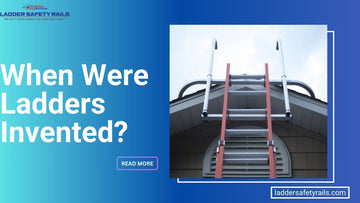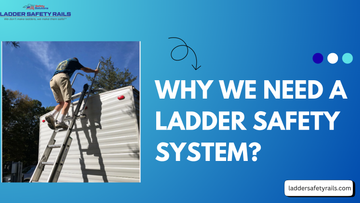
Ladders, with their seemingly simple design, are indispensable tools in both professional and domestic settings, facilitating access to elevated spaces. However, a misinformed approach to ladder usage can result in serious accidents and injuries. Despite their widespread use, persistent myths surrounding ladder safety often allow individuals to adopt risky practices. In this blog, we will debunk these myths to promote a safer approach to ladder use.
Myth #1: All Ladders Are the Same
One prevailing misconception is that all ladders are interchangeable, regardless of their design, material, or intended use. In reality, different types of ladders are engineered for specific tasks and environments. Extension ladders are suitable for outdoor tasks, while step ladders are ideal for indoor use. Using the wrong type of ladder for a particular job can lead to instability and accidents.
To ensure safety, it's crucial to choose the right ladder for the task at hand. Consider factors such as height, load capacity, and the surface where the ladder will be placed. Understanding the unique features of each ladder type will go a long way in preventing accidents.
Myth #2: Ladders Don't Need Regular Inspection
Some individuals mistakenly believe that ladders are indestructible and don't require regular inspection. In reality, wear and tear, exposure to the elements, and accidental damage can compromise a ladder's structural integrity over time. Regular inspections are essential to identify any defects or weaknesses before they escalate into safety hazards.
Inspect your ladder before each use, paying attention to rungs, steps, side rails, and hardware. Look for signs of rust, corrosion, bent or cracked components, and loose fittings. If any issues are detected, the ladder should be repaired or replaced immediately. A small investment of time in routine inspections can prevent catastrophic accidents.
Myth #3: Ladder Positioning Doesn't Matter
Improper ladder placement is a significant contributor to accidents. Some people believe that if a ladder seems stable, it can be placed anywhere. This misconception can lead to ladders slipping, tipping, or collapsing.
When setting up a ladder, always follow the manufacturer's guidelines for proper placement. Ensure that the ladder is placed on a stable, level surface, and use leg levellers or shims if necessary. Never place a ladder on uneven ground, soft surfaces, or unstable flooring. Additionally, use the 4-to-1 rule, positioning the base of the ladder one foot away from the surface it leans against for every four feet of ladder height.
Myth #4: Climbing Too High on the Ladder Is Safe
Another prevalent myth is that climbing beyond the recommended height on a ladder is acceptable as long as one maintains balance. This misconception can result in serious injuries or falls. Each ladder has a designated maximum height, and exceeding this limit significantly increases the risk of accidents.
Always adhere to the ladder's height limitations specified by the manufacturer. If the task requires reaching a higher point, choose a taller ladder rather than compromising safety. Overreaching or standing on the top rungs can lead to loss of balance and falls, causing severe injuries.
Myth #5: It's Safe to Overload Ladders
Some individuals believe that ladders can handle more weight than their designated load capacity. This is a dangerous misconception that can lead to ladder failure, causing serious injuries or fatalities. Exceeding a ladder's weight limit compromises its structural integrity and increases the likelihood of collapsing.
Always check the load capacity of a ladder before use and ensure that it can support your weight along with the weight of tools and materials. If you need to carry heavy items while on a ladder, use a tool belt or pulley system to transport them safely. Ignoring weight restrictions is a recipe for disaster and can result in long-term consequences.
Myth #6: Ladder Safety is Common Sense, No Training Needed
While some aspects of ladder safety may seem like common sense, proper training is essential to ensure that individuals are aware of potential risks and know how to use ladders safely. Overconfidence and a lack of training can lead to complacency, increasing the likelihood of accidents.
Employers and individuals should prioritize ladder safety training to equip workers with the knowledge and skills needed to use ladders effectively. Training should cover proper ladder selection, inspection, setup, and climbing techniques. By investing in education, organizations can create a safer working environment and reduce the risk of ladder-related accidents.
Dispelling common ladder safety myths is crucial for promoting a culture of safety in workplaces and homes. By understanding the importance of selecting the right ladder, regular inspections, proper positioning, height limitations, weight restrictions, and the necessity of training, individuals can significantly reduce the risk of ladder-related accidents. Implementing these safety measures ensures that ladders remain valuable tools rather than potential hazards, allowing everyone to climb to new heights with confidence and security.
Read More Blogs:






